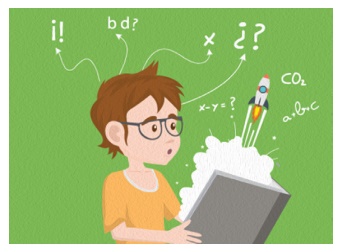Meaning, Definition, Causes, Classification, Signs and Symptoms, Dignosis, Management, Risk Factors - Learning Disability | 12th Nursing : Chapter 10 : Mental Health Nursing
Chapter: 12th Nursing : Chapter 10 : Mental Health Nursing
Learning Disability
Learning Disability
Difficulties with reading, writing and/ or math are recognizable
problems during the school ages, the signs and symptoms of learning
disabilities are most often diagnosed during that time. Learning disabilities
are referred to as “hidden disabilities”. The person looks perfectly
“normal” and seems to be a very bright and intelligent person, yet may be
unable to demonstrate the skill level expected from someone of a similar age.
Children with learning disabilities are as smart as or smarter than their
peers.
Definition
Learning disabilities are disorders that affects one’s ability to
understand or use spoken or written language, do mathematical calculations or
direct attention.

Causes
The causes for learning disabilities are not well understood, and
sometimes there is no apparent cause for a learning disability. However, some
causes of neurological impairments include:
·
Heredity
and genetics: Learning disabilities often run in the family.
·
Problems
during pregnancy and birth: Malnutrition Anomalies in the developing brain,
illness or injury, fetal exposure to alcohol or drugs.
·
Accidents
after birth: Head injuries, Malnutrition, Toxic exposure to heavy
metals
Characteristics of Learning Disability:
·
Slow reading rate
·
Difficulty in recalling
·
Difficulty in finding
·
Confusion
·
Problems with reasonings
Types of Learning Disabilities
A. Dyscalculia
This is a type of learning disability, where the children have
difficulty in math fact. They have poor understanding of math symbols, numbers
and feel difficulty in counting the numbers.
Management: Allow use of fingers, use diagrams and provide peer
assistance. Also use mnemonic devices and schedule time for practice.

B. Dysgraphia
Type of learning disability that affects children handwriting ability and fine motor activity. It
may be illegible handwriting, spelling mistakes, spatial problem in paper.

Management
·
Conduct oral exams.
Provide notes to decrease writing.
·
Allow to use ruled paper
and graph paper.
C. Dyslexia
learning disability that affects reading and related skill. This
also known aslanguage based learning disability. It may affect fluency, recall,
writing, spelling and sometimes speech.
The student may read slowly, trouble in spelling, cannot exhibit
recalling words. May feel difficulty in handwriting.
Treatment:
·
Intensive teaching
techniques
·
Improve both spoken and
written language skills
·
Classroom modification

Management
Provide calm area for study. Provide copy of notes, small unit of
lessons, large print books. Do not count the spelling in tests.
Non-Verbal Learning Disabilities
It is defined as trouble in interpreting nonverbal cues like
facial expression and body language.
Management: rehearse getting from place to place.
Orally point out the difference, connection on resemblance.

Assessment
Many normed assessÂments can be used in evaluating skills in the
primary academic domains: it includes;
• Word recognition, fluency, and comprehension;
Mathematics, including computation and problem solving;
Written expression, including handwriting, spelling and
composition.
The purpose of assessment is
·
to determine what is
needed for intervention,
·
which also requires
consideration of contextual variables and
·
whether there are
comorbid disorders that must also be identified and treated,
such as behavioral issues or language
Attention Deficit ÂHyperactivity Disorder
Attention Deficit Hyperactivity
Disorder is otherwise known as Hyperkinetic disorder. The syndrome
was first described by Heinrich Hoff in 1854.

Definition
Attention Deficit and Hyperactivity Disorder is a Neuro behavioral
developmental disorder characterized by inattentiveness, over activity, easily
distractable and impulsiveness. The child responds to multiple stimuli at same
time.
Epidemiology
ADHD is most commonly studied and diagnosed in, primary school
children 1.7%, school aged children 3 %– 5%.
The ratio of boys and girls ranges from 2: 1.
Risk Factors for ADHD
·
Drug exposure of baby
during pregnancy
·
Birth complications
·
Low birth weight
·
Lead poisoning
Causes for ADHD:
Biological causes:
·
Genetic: biological
parents of ADHD.
·
Bio chemical:
alterations in dopamine and nor – epinephrine.
·
Anatomical causes:
Alteration in the regions of frontal lobes, basal ganglia, and cerebellum in
brain
Psychosocial Causes
·
Family dysfunction
·
Stressful events
·
Emotional deprivation
·
Paternal criminality
·
Low socio economic
status and poverty
Perinatal Causes
·
Alcohol and tobacco
smoke exposure during pregnancy.
·
Head injuries.
·
Infections during
pregnancy, at birth and early childhood.
·
Prolonged labour
·
Perinatal asphyxia
·
Postnatal infections,
CNS abnormalities due to trauma
Environmental Causes
Environmental lead. Elevated body levels of lead affects the
cognitive and behavioural development in children. Food dyes and additives
(colouring preservatives), artificial flavours.
Clinical Features
·
Sensitive to stimuli
·
Easily upset by noise,
light and environmental changes
·
Short attention span,
easily distractible,
·
Failure to finish works
·
Poor learning capacity
and memory.
Types of ADHD

Diagnosis
·
A detailed history about
pre natal and developmental history
·
Teachers school report
and parents report
·
Child guidance clinic
and complete psychiatric evaluation with psychologist
·
Medical examination for
neurological examination, hearing and vision.
Treatment
·
Medications
·
Therapies
·
Behaviour modification
therapy
·
Family education
·
Social skill training
·
Attention training
·
Visual training
·
One to one talking
ADHD in Classroom
·
Reduce seating
distractions
·
Supervision
·
Give positive
reinforcement
Homework folder for parents
Related Topics